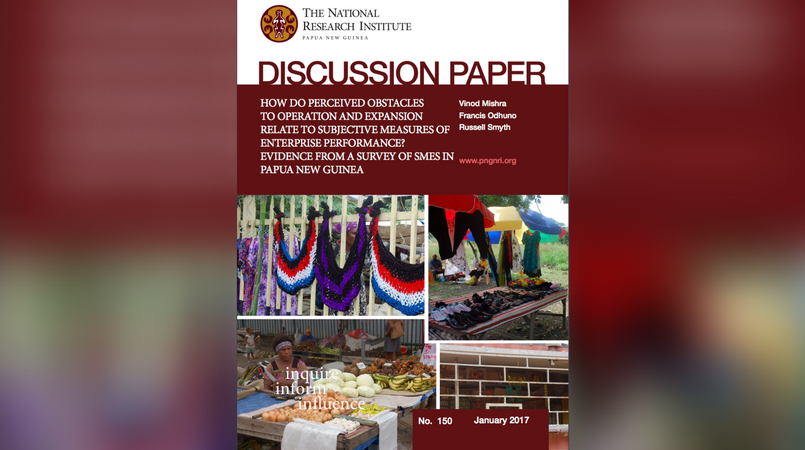
The remote location of small to medium enterprise operators is one of the biggest obstacles to their operations, expansion and performance.
According to a National Research Institute (NRI) report, this is among three main obstacles affecting SME’s growth and performance.
The other two include the difficulty leasing or buying land, and difficulties dealing with banks, are the main
The report titled ‘How do perceived obstacles to operation and expansion relate to subjective measures of enterprise performance? Evidence from a survey of SMEs in Papua New Guinea’ and released today identifies the obstacles.
The NRI reports states that remoteness makes it difficult for indigenous entrepreneurs to transport goods. It affects their customer base, workforce size and sales.
Other obstacles such as difficulties in leasing or buying land hinder SME businesses from increasing their workforce, and difficulty dealing with banks, which could be preventing access to finance necessary for increasing business asset base.
SMEs also face a myriad of other problems such as unreliable electricity, law and order, and retaining skilled workers.
The report recommends that the network of physical and business infrastructure in remote parts of the country be improved, make more land accessible including reducing difficulty in obtaining lease or land title ownership, and find ways to make it easier for SMEs to access finance with financial institutions.
The paper is based on a survey of formal SMEs in PNG and identifies obstacles to SME business operations, expansion and performance.
It finds that the biggest obstacle to business operations is the remote location ofbusinesses. This is significant because 83 per cent of SMEs in remote locations are owned by indigenous Papua New Guineans.
